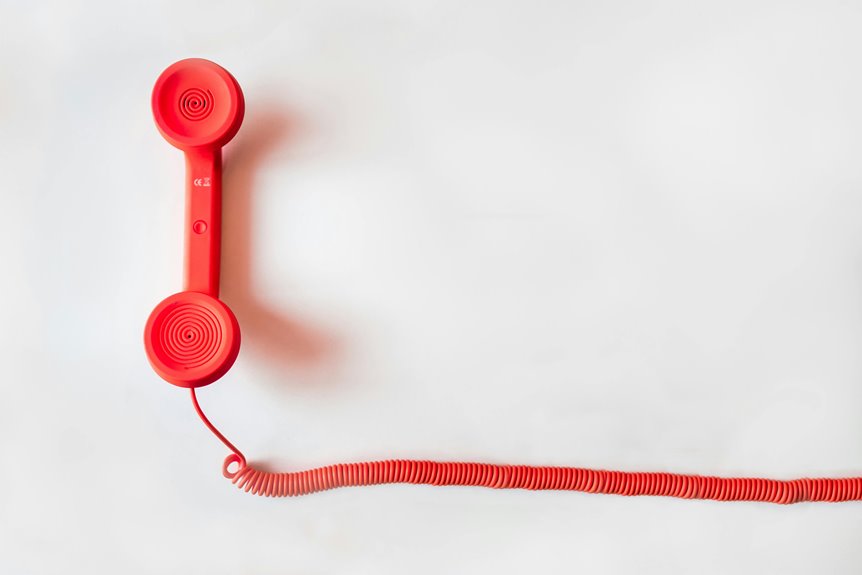When managing cables, avoid common mistakes like ignoring cable length and type, which can lead to clutter and poor performance. Don't neglect labeling; it saves time and enhances organization. Pay attention to heat management to prevent damage and hazards. Skipping regular maintenance can create bigger problems down the line. Also, ensure your cable ties are compatible. By focusing on these aspects, you'll create a tidier and safer workspace. Discover more tips for effective cable management!
Table of Contents
Key Takeaways
- Select appropriate cable lengths to avoid excess slack or tension, ensuring efficient organization and functionality.
- Label all cables clearly to prevent confusion and streamline troubleshooting during device rearrangements.
- Implement effective heat management by maintaining loose cable arrangements and monitoring temperatures to prevent overheating.
- Schedule regular maintenance checks to identify and address issues like dust accumulation and frayed cables before they escalate.
- Use compatible cable ties that suit the cable type and environment, ensuring proper sizing to avoid damage from over-tightening.
Ignoring Cable Length and Type
When you overlook the importance of cable length and type, you risk creating a tangled mess that can hinder both functionality and aesthetics.
Choosing the right length ensures your cables reach their intended devices without excess slack, which can lead to clutter. If you opt for cables that are too short, you might find yourself struggling to connect devices or forced to buy extensions.
On the other hand, using cables that are too long can create unnecessary loops and tangles. Additionally, different types of cables serve specific purposes; using the wrong type can affect performance.
Neglecting Cable Labels
Many people underestimate the power of cable labels in maintaining an organized workspace. When you neglect to label your cables, you create confusion that can lead to wasted time and frustration.
You might find yourself tracing wires to identify which belongs to what device, especially during troubleshooting or rearranging. By taking just a few moments to label each cable clearly, you'll streamline your process and enhance efficiency.
Use a label maker or simple tape and a permanent marker; it doesn't have to be fancy. Make sure your labels are visible and durable enough to withstand wear.
Overlooking Heat Management
While you might focus on organizing cables for aesthetics and accessibility, overlooking heat management can lead to serious issues. Excessive heat can damage your equipment, reduce performance, and even pose a fire hazard. To prevent this, ensure proper airflow around your cables and devices.
| Tip | Action Required | Benefits |
|---|---|---|
| Keep Cables Loose | Avoid tight bundles | Enhances airflow |
| Use Cable Ties | Secure but not too tight | Prevents overheating |
| Monitor Temperature | Use sensors or software | Alerts you to heat issues |
Skipping Regular Maintenance
If you neglect regular maintenance of your cable management system, you could be setting yourself up for significant problems down the line.
Dust and debris can accumulate, causing overheating and potential damage to your equipment. Regularly check for frayed cables, loose connections, and signs of wear. If you spot issues early, you can address them before they escalate into costly repairs or outages.
Schedule routine inspections—monthly or quarterly—based on your environment. Keep your cables organized and secured, and don't forget to clean your workspace.
Using Incompatible Cable Ties
Using incompatible cable ties can lead to serious issues in your cable management setup.
It's crucial to consider the material compatibility and proper sizing of the ties you choose, as mismatches can cause damage or even failure over time.
Make sure you're selecting the right ties to keep your cables secure and organized.
Material Compatibility Matters
When selecting cable ties for your project, it's crucial to consider material compatibility, as the wrong choice can lead to serious issues.
Using incompatible materials can result in tie degradation, failure, or damage to cables. Here are some key factors to keep in mind:
- Temperature Resistance: Ensure the tie can withstand the environmental temperature to avoid brittleness or melting.
- Chemical Exposure: If your cables are near chemicals, choose ties resistant to those substances to prevent deterioration.
- UV Stability: For outdoor applications, select UV-resistant ties to prevent fading and weakness over time.
- Electrical Insulation: If your project involves electrical wiring, use ties with appropriate insulating properties to avoid shorts or hazards.
Proper Sizing Essential
Proper sizing of cable ties is crucial for effective cable management and ensuring the longevity of your setup.
Using ties that are too small can lead to over-tightening, which damages cables and connectors. On the other hand, oversized ties may not hold cables securely, creating a messy and unsafe environment.
When selecting cable ties, consider the diameter of the cables you're bundling. Always opt for ties that provide a snug fit without excessive tension.
If in doubt, it's better to choose a slightly larger tie, as you can always trim the excess.
Failing to Plan Your Layout
Failing to plan your layout can lead to a tangled mess of cables that not only looks unprofessional but can also hinder your device's performance.
Taking a few moments to map out your cable management strategy can save you time and frustration later. Here are four tips to help you create an effective layout:
- Identify cable lengths: Measure the distance between devices to avoid excess slack.
- Group similar cables: Keep power cords separate from data cables to reduce interference.
- Use labeled ties: Label your cables so you can easily identify them when troubleshooting.
- Consider accessibility: Ensure you can easily reach cables for maintenance or adjustments.
Frequently Asked Questions
What Tools Are Essential for Effective Cable Management?
To effectively manage cables, you'll need cable ties, a cable organizer, scissors, and possibly adhesive clips. These tools help you streamline your setup, keeping everything tidy and reducing the risk of tangling.
How Can I Safely Bundle Multiple Cables Together?
To safely bundle multiple cables together, use velcro straps or cable ties, ensuring they're not too tight. Organize by length and function, and avoid crimping to maintain signal quality. Keep it neat for easy access.
What Are the Best Practices for Organizing Cables Under a Desk?
To organize cables under your desk, use cable ties or clips to bundle them neatly. Label each cable for easy identification, and ensure you leave some slack for movement without causing tangles or damage.
How Do I Choose the Right Cable Management Accessories?
To choose the right cable management accessories, consider your specific needs, like cable length and type. Look for clips, sleeves, or trays that suit your setup, ensuring they're easy to install and maintain.
Can I Use Adhesive Clips on All Surfaces?
You can use adhesive clips on many surfaces, but not all. They stick best to smooth, clean surfaces like painted walls or metal. Avoid using them on porous or uneven materials to ensure a secure hold.




